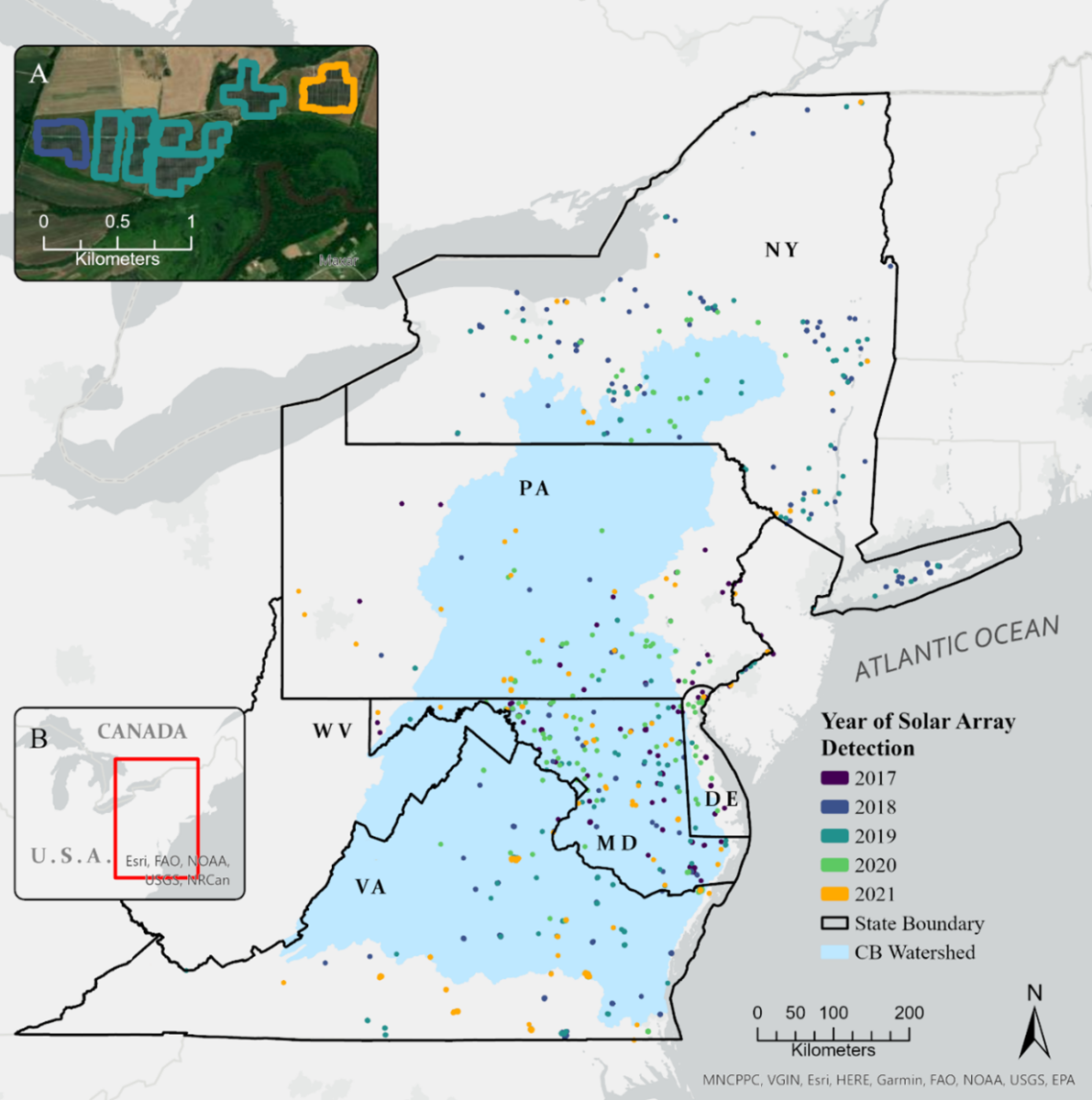A research team from the Chesapeake Conservatory studied patterns of solar buildouts in the six states surrounding the Chesapeake Bay Watershed ─ Delaware, Maryland, Pennsylvania, New York, Virginia, and West Virginia ─ and identified drivers for siting and land use, as well as project impacts on biodiversity in the region.
The Chesapeake Bay is the largest estuary in the United States and is home to more than 18 million people.
According to the report, solar development in the six states has, up to now, “largely avoided important wildlife habitat.” In addition, researchers “found strong evidence that solar arrays were built preferentially on previously cultivated lands, rarely replaced natural landcover, and were in areas of average habitat quality relative to available areas.”
While patterns in the Southwest region of the US show solar projects being built near or within protected areas and replacing natural landcover, the science team found that solar array construction in the Chesapeake Bay Watershed area avoided natural landcover, and arrays were built away from protected areas. The report noted the importance of policies and standards that require attention to how solar projects affect biodiversity and the potential to benefit land conservation.
The team used a convolutional neural network to map the footprints of ground-mounted solar arrays present in satellite imagery annually from 2017 to 2021 for the examined states. In addition, researchers quantified the relationship between geospatial covariates and the rate of solar development by fitting a binomial-Weibull model to solar time-series data in a hierarchical, Bayesian framework. In all, a total of 958 solar arrays were mapped in 2021, covering 52.32 km2.
Popular content
The study’s results identified places where solar buildout was most likely and provided data that could be used to “align current siting patterns with conservation priorities” in the region. The report also noted that “the transition of cultivated areas to solar energy facilities could represent a net benefit to conservation if wildlife-friendly solar practices are implemented.” Researchers identified beneficial practices such as supporting native plants and local wildlife, and “increases in pollinator abundance, diversity, and richness.”
The report ultimately concludes that the avoidance of natural landcover in favor of cultivated cropland presents “an opportunity to synergistically develop renewable energy and improve biodiversity,” and recognizes the great potential for solar energy facilities to be paired with agriculture for the benefit of native species diversity and carbon sequestration.
“From a conservation perspective, we were encouraged to see natural areas being avoided over the past six years. In places where solar is replacing previously degraded land cover, these facilities may also present a unique opportunity to restore biodiversity and ecosystem services in the watershed if native vegetation is maintained in areas under and around arrays,” said Michael Evans, a senior data scientist with Chesapeake Conservancy’s Conservation Innovation Center (CIC).
Their findings are available in the report “Predicting patterns of solar energy buildout to identify opportunities for biodiversity conservation,” published in Biological Conservation.
This content is protected by copyright and may not be reused. If you want to cooperate with us and would like to reuse some of our content, please contact: editors@pv-magazine.com.



1 comment
By submitting this form you agree to pv magazine using your data for the purposes of publishing your comment.
Your personal data will only be disclosed or otherwise transmitted to third parties for the purposes of spam filtering or if this is necessary for technical maintenance of the website. Any other transfer to third parties will not take place unless this is justified on the basis of applicable data protection regulations or if pv magazine is legally obliged to do so.
You may revoke this consent at any time with effect for the future, in which case your personal data will be deleted immediately. Otherwise, your data will be deleted if pv magazine has processed your request or the purpose of data storage is fulfilled.
Further information on data privacy can be found in our Data Protection Policy.